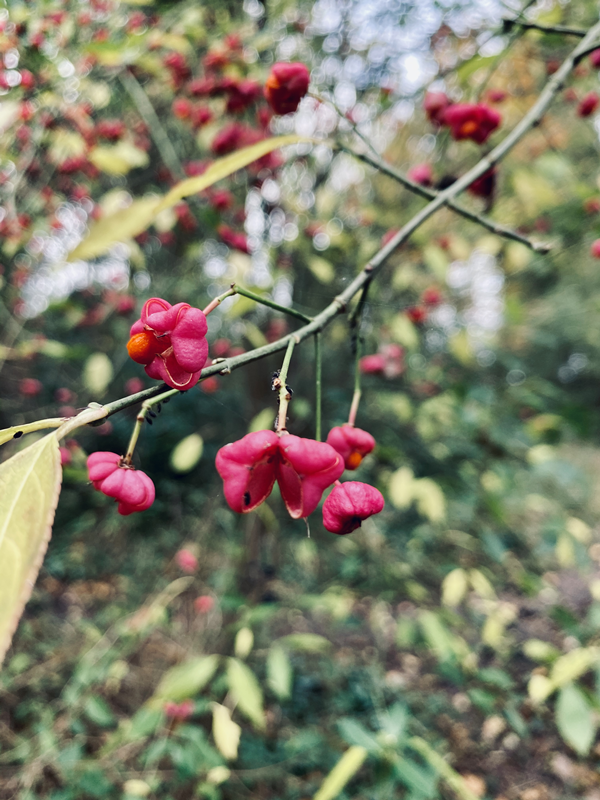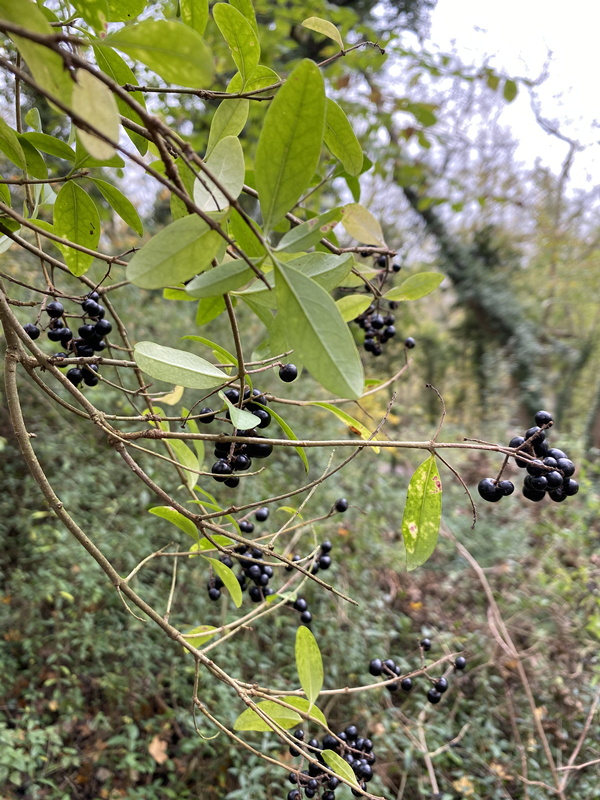The Thicket, St Ives, November 2020
How old are the woods along the Thicket Path? There are signs that they are very old indeed, possibly between 300 and 400 years in fact. How do we know? Because there are plants that can be seen there that grow only in places that have never been cultivated. In other places Bluebells are the clue. Along the riverside here we are fortunate to have two very different distinctive plants that are easy to spot. The first is the Spindle Tree with its shocking pink, four-lobed berries. As they split a bright orange seed protrudes – they could almost be tiny Christmas tree decorations! Instead the seeds were once dried, ground to a powder and sprinkled on the heads of small boys to kill their lice. The girls must not have had itchy scalps! The hard Spindle wood was used to make skewers, toothpicks, pegs and knitting needles – a very useful plant.
 |
 |
|
| Spindle Tree berries | Spurge Laurel berries |
Photographs by Ian Jackson
The second ancient wood ‘indicator plant’ is Spurge Laurel, with characteristic glistening black fruits. This too was useful – in some counties it was gathered and sold as a horse medicine. It is a member of the Daphne family and sometimes crops up in gardens and is welcomed for its delicious honey scent.
See for yourself At the time of writing (early November) both plants were putting on a show. Head down the Thicket Path from the town and turn right up the steep footpath into the woodland by the information board (or from Houghton, turn left). Along this path there are at least three Spindle Trees, but many more Spurge Laurel bushes. You are now in a very old wood!
Trustee Ian Jackson

